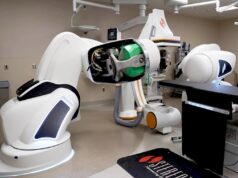
Stereotaxis has announced the results of a retrospective study conducted at Paracelsus Medical University in Nuremberg, Germany, which showed significantly reduced radiation exposure for patients undergoing catheter ablation for persistent atrial fibrillation with the Niobe magnetic navigation system. The study received first place honours for “Best Poster Presentation” at the European Cardiac Arrhythmia Society Congress in Paris, France.
Dirk Bastian, electrophysiology specialist at the university, says, “The data collected from these procedures demonstrate the significantly reduced fluoroscopy times that can be achieved through the Niobe system’s remote navigation and image integration capabilities—minimising radiation exposure to both the patient and operator—and also reflect excellent acute and long-term results with minimal complications. We are very pleased to share these important findings as we continue our pledge to provide the highest patient care through innovative medical technologies.”
The study analysed data on 169 patients with symptomatic, persistent AF undergoing catheter ablation with the Niobe system, documenting fluoroscopy time for system calibration, transseptal access/catheter positioning and mapping/ablation. Total fluoroscopy time was 5.1±3.8 minutes, compared to an average of 14 to >60 minutes reported for traditional manual ablation procedures, and the effective radiation dose was 0.61±0.9 millisieverts compared to the typical mean effective dose of 16.6 millisieverts reported for manual procedures, representing a 96% reduction.
The Nuremberg hospital, one of the largest in Europe, installed the Niobe system as part of its new Heart-Vascular Center. Konrad Göhl and Dirk Bastian were trained on the Niobe system in 2011 and have completed more than 1,000 ablation procedures on the remote magnetic navigation platform. The department of electrophysiology will complete the 12 month follow-up on approximately 600 patients undergoing atrial fibrillation ablation with the Niobe system and analyse the data regarding efficacy, safety and radiation exposure for the total population as well as several subgroups.












